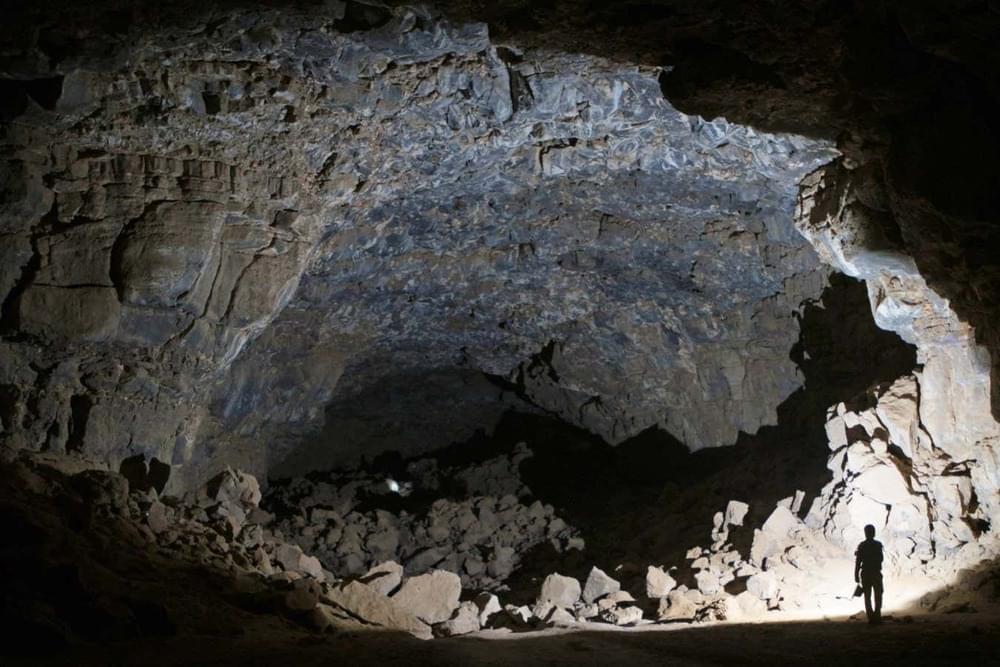Page 13
Apr 18, 2024
Boston Dynamics Unveils New Electric Humanoid Robot in Partnership with Hyundai
Posted by Chris Smedley in categories: innovation, robotics/AI
Apr 18, 2024
This hellish exoplanet’s skies rain iron and create a rainbow-like effect
Posted by Chris Smedley in categories: particle physics, space
If the effect is confirmed to be happening over WASP-76b, it could reveal a great deal about this strange and extreme exoplanet — a world unlike anything seen in our stellar domain.
Related: Ultra-hot exoplanet has an atmosphere of vaporized rock
“There’s a reason no glory has been seen before outside our Solar System – it requires very peculiar conditions,” Olivier Demangeon, team leader and an astronomer at the Institute of Astrophysics and Space Sciences in Portugal, said in a statement. “First, you need atmospheric particles that are close-to-perfectly spherical, completely uniform and stable enough to be observed over a long time. The planet’s nearby star needs to shine directly at it, with the observer — here CHEOPS — at just the right orientation.”
Apr 18, 2024
Brain Cells That Enhance Memory Focus and Storage Identified
Posted by Genevieve Klien in categories: biotech/medical, neuroscience
Summary: Researchers uncovered how certain brain cells enhance our ability to maintain and focus on short-term memories. Their study highlights a new type of neuron, dubbed PAC neurons, which coordinate the activity of memory-specific neurons without storing any information themselves.
These findings were derived from the brain activity recordings of epilepsy patients during memory tasks, providing novel insights into how working memory functions. Understanding these mechanisms may lead to improved treatments for disorders like Alzheimer’s and ADHD, where such cognitive functions are impaired.
Apr 18, 2024
Robots that learn as they fail could unlock a new era of AI
Posted by Kelvin Dafiaghor in category: robotics/AI
Lerrel Pinto says the key to building useful home robots is helping them learn from their mistakes.
Apr 18, 2024
Ancient humans lived inside a lava tube in the Arabian desert
Posted by Genevieve Klien in category: futurism
Underground tunnels created by lava flows provided humans with shelter for thousands of years beneath the hot desert landscape of Saudi Arabia.
Apr 18, 2024
Consequences of aging, why we die explained by Nobel biologist
Posted by Genevieve Klien in categories: ethics, life extension
Nobel Prize-winning molecular biologist Venki Ramakrishnan sat down with ABC News Live to discuss the science and ethics of extending the human lifespan.
In his new book, “Why We Die: The New Science of Aging and the Quest for Immortality,” Ramakrishnan explains why we may not want to lengthen our lives much longer.
Ramakrishnan’s thought-provoking argument is that a society where people lived for hundreds of years could potentially become stagnant, as it would consist of the same group of people living longer, raising important questions about societal dynamics and progress.
Apr 18, 2024
CEOs Suddenly Fear AI Will Take Their Jobs Too
Posted by Kelvin Dafiaghor in categories: business, robotics/AI
As many CEOs gloat over the idea of replacing their human workers with AI, some of them are now starting to fear that they, too, may be on the chopping block.
Per a new report from the IT consulting firm AND Digital which surveyed hundreds of business leaders in the US, the UK, and the Netherlands, 43 percent of respondents said they believed AI could take their job as CEO.
Denizens of the C-suite aren’t making a strong case for keeping their positions, either. Embarrassingly, nearly that exact same proportion — 45 percent — admitted to secretly making major business decisions “based on data and information obtained using ChatGPT.” Strong evidence, perhaps, that maybe replacing CEOs with AI isn’t such a bad idea after all.
Apr 17, 2024
Anthropic CEO Says That by Next Year, AI Models Could Be Able to “Replicate and Survive in the Wild”
Posted by Dan Kummer in category: robotics/AI
As AI seems to grow more powerful every day, the CEO of Anthropic is saying that soon, it might be self-sustaining and self-replicating.
Apr 17, 2024
Retro-reflectors could help future cities keep their cool
Posted by Cecile G. Tamura in category: futurism
Engineers at Princeton University have quantified the cooling benefits of a simple solution for beating urban heat: reflecting solar radiation back from whence it came.


















